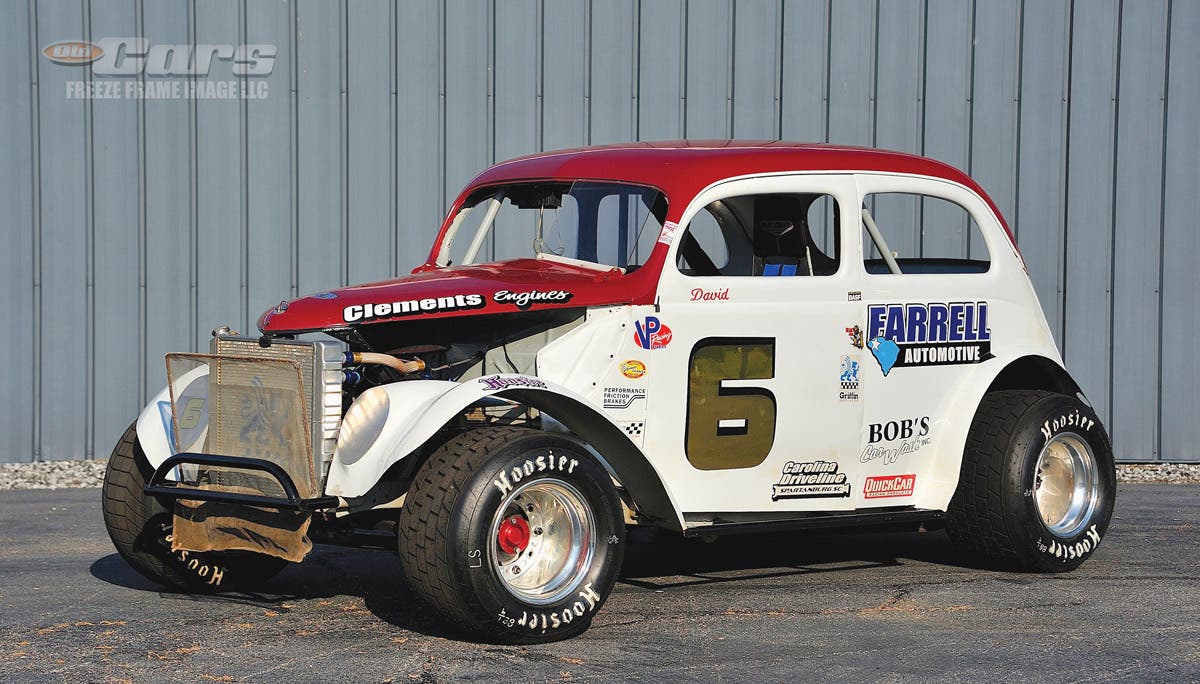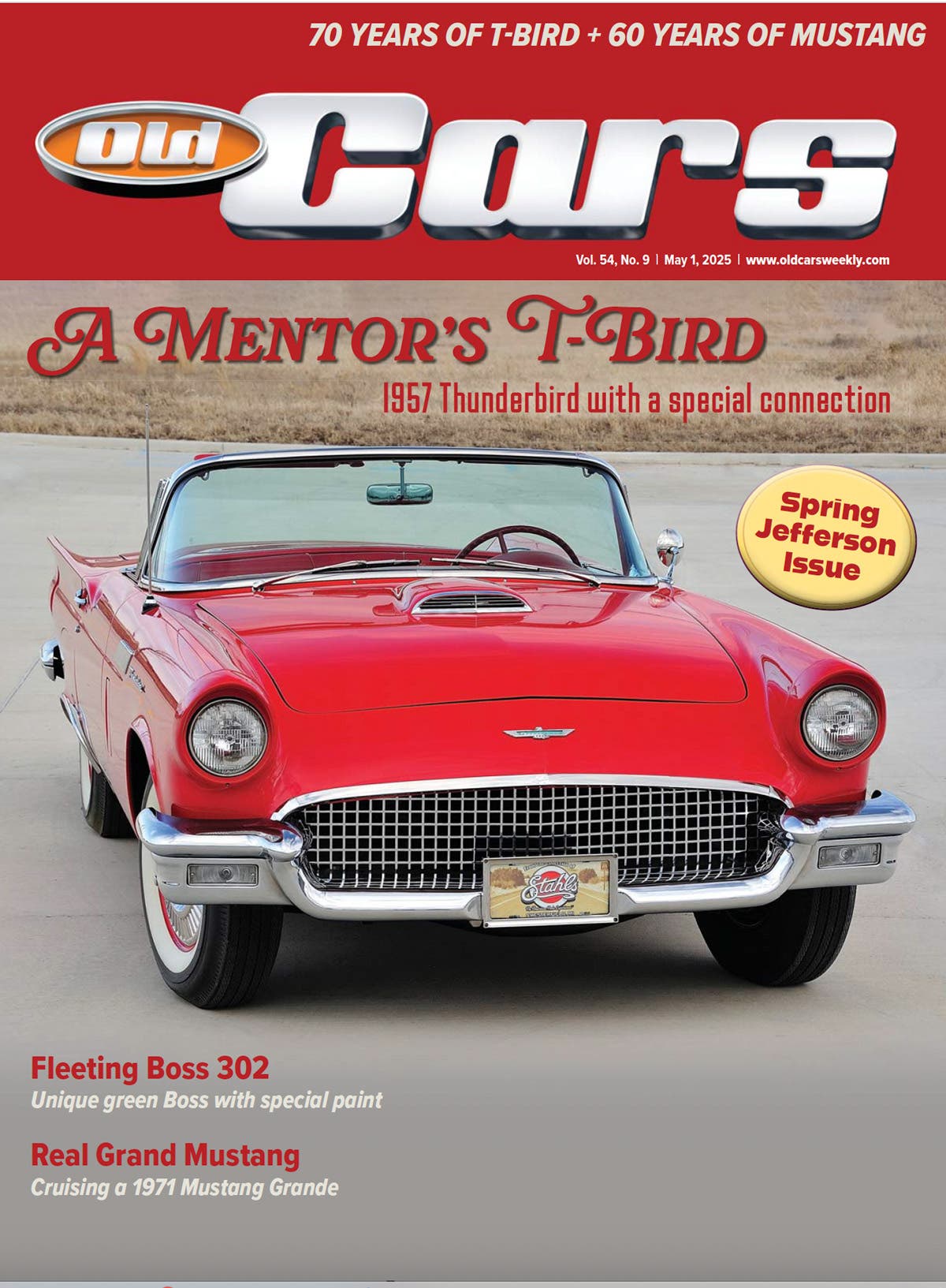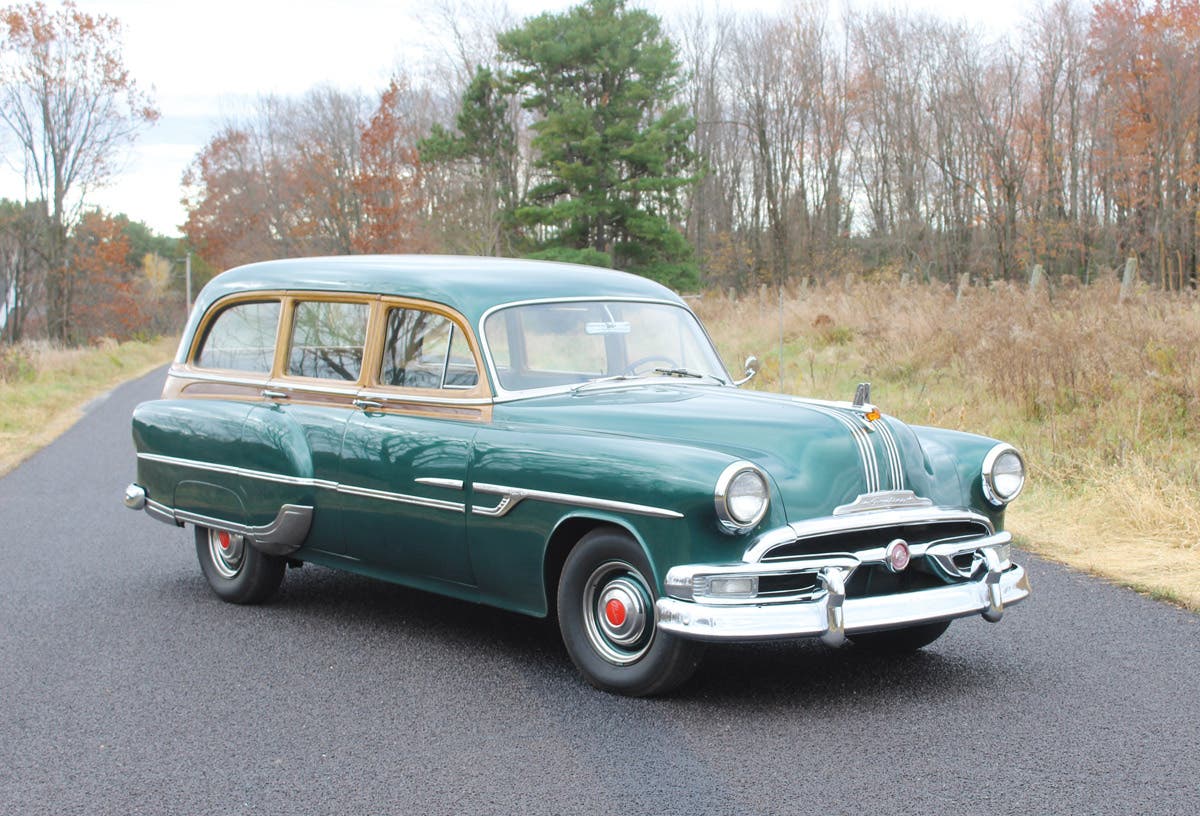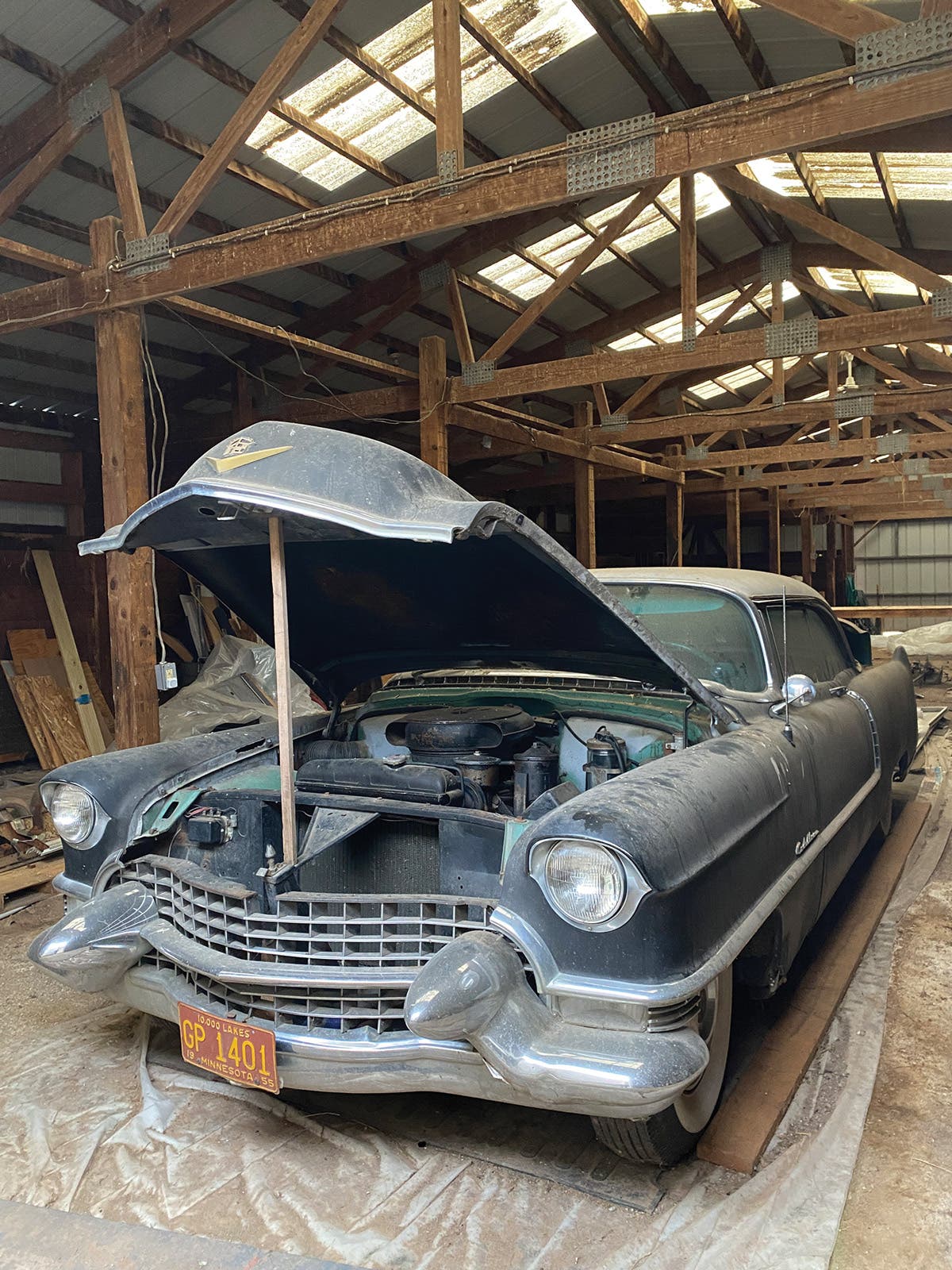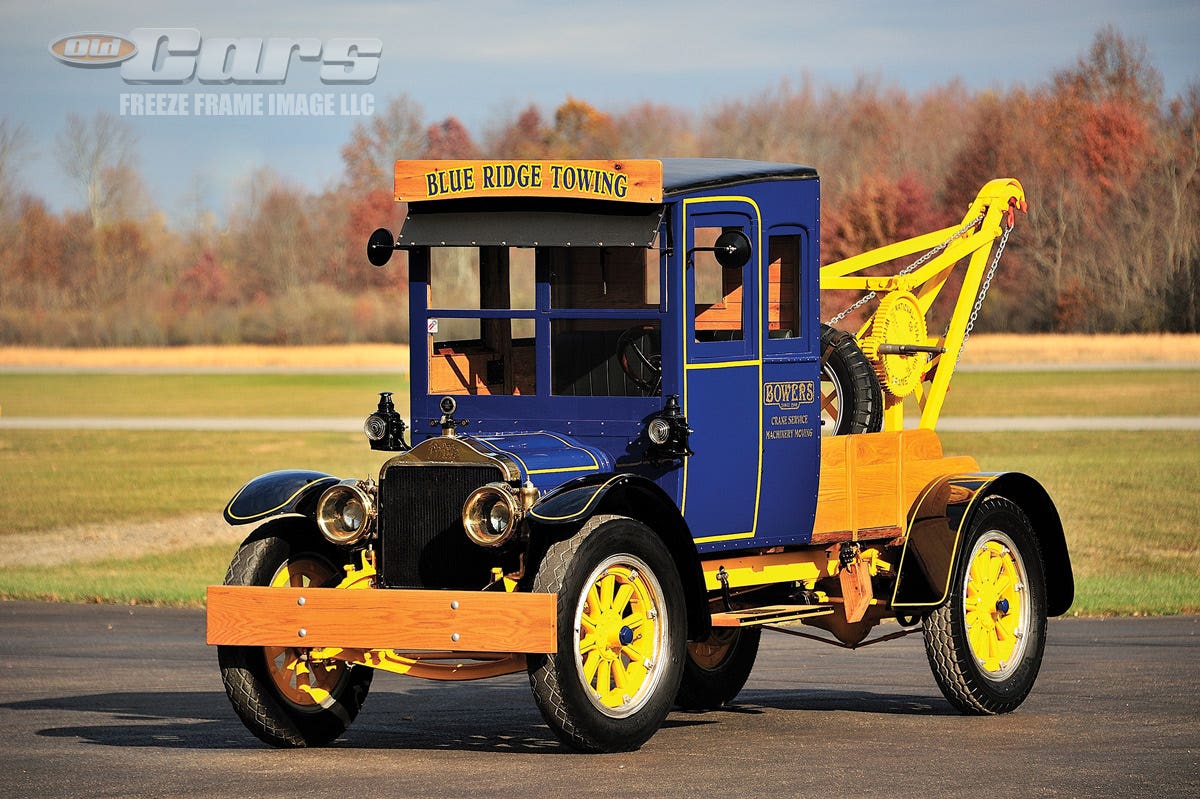Car of the Week: 1973 Chevrolet Chevelle
Jim Hibbert knew from the beginning he wanted to complete a frame-off restoration of his 1973 Chevrolet Chevelle.
Story and photos by Angelo Van Bogart
Guiness doesn’t keep records for such a feat, but Jim Hibbert has probably spent more time in a 1973 Chevelle than any other person his age or younger. It’s also likely that he’s the only person of any age who has completed a frame-off restoration of a 1973 Chevelle that wasn’t a big-block Super Sport model.
“I always liked the body styles, and my parents owned one when I was really young,” Hibbert said. “I always find myself looking at the early- to mid-1970s cars.”
Hibbert’s parents bought a green 1973 Chevelle coupe with the famous Colonnade roof as a new car, and after a childhood of riding in the back seat, Hibbert came to own that car. In 1989, he sold it to buy his second 1973 Chevelle coupe, a gold 30,000-mile car Hibbert still shows at car shows around his home in Oshkosh, Wis. The odometer numbers on that gold Chevelle continue to flip, well past 200,000 miles. But that green Chevelle eventually came back into his life.
“I sold it to a guy and ended up buying it back from him,” Hibbert said. “It was a chance encounter; I saw that car at a lot and recognized it in a chance encounter, and the owner is now my best friend. I ended up parting it out for inventory.”
By the time he re-purchased the green Chevelle his parents bought new, the car had 160,000 miles and had suffered like so many other 1973-’77 GM A bodies: it had rusted to oblivion. Many of those that didn’t completely succumb to corrosion faced a bittersweet end as stock cars and enduro race cars on local tracks throughout the country. Those that did survive were often modified with jacked-up rear ends, aftermarket sunroofs and engine transplants, then were driven into the ground.
One of the few Chevelles that did not face an early end was Hibbert’s third 1973 Chevelle, a blue Chevelle Malibu Colonnade coupe with only 6,800 miles. Despite such a low odometer reading, Hibbert found this Chevelle in a condition that wasn’t as pristine as other cars with similar mileage and age.
“I saw it in the Auto Buyer in 1999,” he said, “and they advertised it with 6,800 miles. They had a pretty high price on it, and I thought if I didn’t have to tamper with it, it was worth it. I went down to Illinois to look at it and it was evident this car had been in some kind of wreck. You could tell it had a replacement passenger front fender and they had blended the paint. It was also missing a bumper bolt and had other signs of being damaged [in the front].”
Hibbert had traveled from northeast Wisconsin to Illinois to view the car and was disappointed to find the Chevelle Malibu had been misrepresented by the consignment dealership advertising it.
“I was holding the air conditioning wiring in my hand and asked the salesman how the A/C worked, and he said, ‘It blows cold,’” Hibbert said.
Despite a few other minor issues, the car showed signs of being a low-mileage Chevelle Malibu. Hibbert also knew the chances of finding another solid mid-1970s Chevelle were slim, so he made an offer.
“The guy lied to me at the consignment lot, so I low-balled him and he showed me the door,” Hibbert said.
Over the next few months, the car continued to appear in advertisements by the consignment dealership, and every month, Hibbert would taunt the dealership with another phone call to see if they would accept his earlier offer. Each time, the dealer turned him down. Finally, the car’s owner directly contacted Hibbert and was ready to negotiate.
The seller was a car collector and gave Hibbert the story on the Chevelle, saying it was owned by an older couple, and after it was wrecked, it was parked for a long period of time. The seller had purchased it with a group of Cadillacs and had no specific interest in the 1973 Chevelle so he put it up for sale. Given Hibbert’s previous experience in trying to purchase the car, he had a friend in Illinois verify the seller’s facts before a deal was struck.
“Eventually, I did go and buy the car,” Hibbert said. “The patina was there. I’m sure it was the original mileage, because stuff matched up. The guy gave me a price and I probably paid too much.”
Chevelle in the ’70s
General Motors intended 1972 Chevelles to look like 1973 Chevelles. A strike at Chevrolet plants in 1971 stalled production and GM’s planned styling cycle, which called for entirely new Novas, Monte Carlos and Chevelles to be introduced for 1972. Due to delays caused by the strike, the Chevrolet models that were to be new for 1972 became new for 1973.
When the thoroughly new Chevelles did hit Chevrolet dealers for the 1973 model year, they sported a new hierarchy and new attitude. With a look best described as Americanized European styling, the Chevelles hit with a new line, starting with the base Chevelle, Chevelle Malibu, Chevelle Laguna and Chevelle SS. All of these Chevelle models were available in every available body style: four-door sedan and wagon or two-door coupe, with the exception of the Chevelle SS, available only as a Colonnade coupe or station wagon. The convertible was discontinued from the series, and the coupe’s hardtop roof styling was replaced by a semi-fastback roofline with a fixed B pillar that formed the leading edge of the triangular rear side window. This styling was bequeathed the name Colonnade coupe on all GM A-bodies.
Oddly, 1973 Chevelles and Buick Centurys were the only GM A-body to receive large, 5-mph bumpers in 1973; the Oldsmobile Cutlass, and Pontiac Grand Prix would not receive them until 1974. However, Laguna Chevelles masked the energy-absorbing bumper feature behind a urethane nose piece painted to match the body color, which also comprised the grille and headlamps.
All 1973 Chevelle body types were larger than their 1972 counterparts, and they looked it. Compare the coupe figures: At 202.9 inches for an overall length, the 1973 Chevelle coupes were more than 5 inches longer than 1972s; overall coupe width grew by more than 1 inch; and the 1973 coupes were nearly half an inch taller than in ’72. However, the wheelbase on coupes remained the same from 1972 to 1973 at 112 inches, and the front and rear tread figures were the same between years at 60 and 59.9 inches, respectively.
Four V-8 engines and one six-cylinder engine were available in Chevelles for 1973: a 250-cid six-cylinder with 100 hp using a single-barrel carburetor (L22); a 115-hp, 307-cid V-8 with a two-barrel carburetor; a 145-hp, 350-cid V-8 with a two-barrel carburetor (L65); a four-barrel, 175-hp 350-cid V-8 (L48); and a 245-hp 454-cid V-8, also with a four-barrel (LS4). The featured car carries the L65 350-cid V-8 with 145 hp.
Available transmissions included a three-speed manual, M21 close-ratio four-speed manual and the M40 Turbo Hydra-Matic automatic. Nearly 97 percent of 1973 Chevelles were fitted with the automatic transmission, including the featured car.
Despite the fresh look, Chevelle sales were down during the 1973 calendar year from 374,448 in 1972 to 264,594 in 1973. The Chevelle Malibu featured here is one of 42,941 such V-8 coupes built in 1973.
Quest for perfection
Hibbert knew from the beginning he wanted to complete a frame-off restoration of his Chevelle to its factory configuration, and hoped to begin work in 2001. Unfortunately, duties at home prevented the work from starting, but it didn’t stop him from driving the car. That summer, he added 10,000 miles to the car’s odometer, and by 2002, he was ready to begin the restoration.
From disassembly to reassembly and detailing the car’s components, Hibbert did all the work himself but the paint. Since the car had such low mileage, the engine was simply given a new gasket set, painted and then reinstalled. Hibbert had another party shoot the car’s light blue metallic exterior paint. In the end, he had the nicest stock 1973 Chevelle Malibu on the road.
“I like them stock,” Hibbert said. “I see a lot of people with modified cars constantly upkeeping their car to make them run right. It’s enough work to keep them clean.”
Hibbert added that the biggest restoration challenge was removing the original brake and fuel lines, sending them out to be reproduced in stainless-steel and waiting for the new lines to be returned.
Since the Chevelle truly had low-mileage, parts hunting was relatively easy. On top of that, Hibbert worked at a Chevrolet dealership and was able to get what few parts he did need from the Chevrolet parts counter.
“There were a few trim pieces I had to get, but I worked at a Chevrolet dealership and so I ordered them,” he said. “I was able to get the rocker trim for about $20 a side; I didn’t have to pay the prices you have to pay for them now — I’ve seen them sell for $1,000.”
However, the savings stopped when it came time to replace the grille.
“The front grille was the biggest pain to find,” Hibbert said. “There was a slight warp in the original grille; there was one angle where I could notice a warp and it just bugged me. The grille took four months to find, and another dealer had one. If it had been a normally stocked item, it would have been less, but the dealer gouged me. But how perfect do you want the car?”
That quest for perfection has earned Hibbert multiple best-of-show, best-paint and best-engine awards for his Chevelle since it was completed in 2003 after a 10-month restoration.
Since it’s very rare to see a 1973 Chevelle restored to such a level, Hibbert notices two distinct reactions to his work when showing his blue 1973 Chevelle Malibu.
“The older crowd is like, ‘Wow, it’s just a Malibu. But people that are used to seeing them around, they say holy (explative), I can’t believe there’s one around.”
Neither of those reactions phase Hibbert.
“I built both of these [Chevelles] for myself,” he said. “With that body style of Chevelle, you are kind of like a MoPar guy — you are out on your own with parts availability and appreciation. If I didn’t have those Chevelles, and if GM didn’t exist, I would be looking at early 1970s Mopars.”
Despite all of his work to make his blue 1973 Chevelle Malibu the best example and its tremendously low mielage, Hibbert isn’t afraid to watch its odometer spin from time to time.
“I came up with parameters for that blue one,” he said. “If there is rain in the forecast, I don’t take that one — I take the gold Chevelle. As far as I am concerned, I don’t drive the blue Chevelle enough, but one car is enough to keep clean after the rain.”
______________________
Show us your wheels!
If you’ve got an old car you love, we want to hear about it. Email us at oldcars@aimmedia.com



